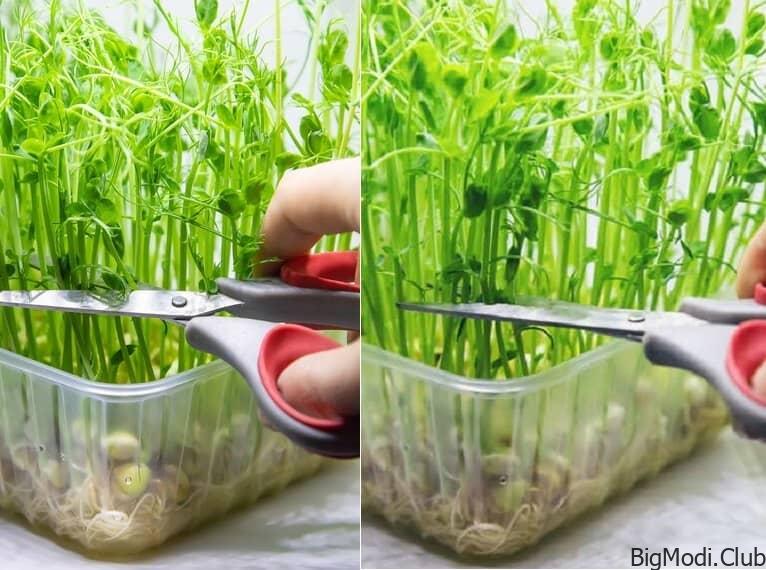If you’re looking for a rewarding gardening challenge, learning how to grow celery can be a fulfilling experience. While celery requires specific care, especially when it comes to temperature and moisture, the payoff is worth the effort. Imagine having a steady supply of fresh, crisp stalks for your soups, salads, or snacks, right from your own garden. Understanding how to grow celery starts with choosing the right season and providing the perfect balance of sunlight, water, and protection from pests. With the right steps, you’ll be harvesting delicious celery stalks in no time!
How to Grow Celery
Celery is a rewarding vegetable to grow, but it does have specific needs. From choosing the right season to harvesting your crisp, tender stalks, here’s everything you need to know to cultivate celery successfully.
Ideal Growing Conditions for Celery
Celery thrives in mild temperatures. It doesn’t fare well in extreme heat or cold, so it’s essential to pick the right time for planting. If you’re in a temperate region, aim to grow celery during spring or autumn. In subtropical areas, plant from mid-autumn to early spring. If you live in a tropical climate, the dry season from April to July is ideal for celery.
Essential Tips for Growing Celery
- Cooler weather is key: Celery prefers the more moderate seasons for growth.
- Seeds or seedlings?: You can start celery from seeds or buy seedlings.
- Sunlight preferences: It does well in full sun or part shade, giving you some flexibility with placement.
- Pest protection: Be sure to protect young plants from pests like snails and slugs, which can cause serious damage.
Preparing the Soil
Before planting, select a spot in your garden with plenty of sunlight, though morning sun and some afternoon shade can also work. Celery needs moist but well-drained soil. To boost its growth, enrich the soil with organic matter, such as compost or organic-based fertilizers.
How to Grow Celery from Seeds
To start celery from seeds, sprinkle the seeds onto the surface of the soil and lightly cover them. Keep the soil consistently moist to ensure proper germination. Since celery seeds germinate best in temperatures between 15-20°C, you might need to start the seeds indoors if the weather is cooler. Once your seedlings are about 10-15 cm tall and nighttime temperatures are above 10°C, transplant them into your garden.
Growing Celery from Seedlings
If you’re using seedlings, ensure each one is planted 15-30 cm apart depending on the variety. The spacing is important because celery needs room to grow healthy stalks. Make sure the soil stays moist and well-drained, and keep an eye out for any pest activity.
Planting in the Garden or Pots
Whether you’re planting in the garden or pots, the steps are quite similar. Sow seeds or plant seedlings in prepared soil with enough drainage. For pots, ensure they’re at least 30 cm wide and have adequate drainage holes. Celery needs regular watering throughout its growth to ensure the stalks stay tender and crisp.
As your celery grows, you can “blanch” the stalks for a milder flavor and lighter color by wrapping newspaper around them. Alternatively, you could opt for self-blanching varieties, which don’t require this step.
Harvesting Celery
When it’s time to harvest, there’s no need to pull up the entire plant. Instead, you can start harvesting individual stalks when they reach the thickness of a pencil. Gently pull the stalks down and out from the base to remove them cleanly.
Common Pests & Diseases
Unfortunately, pests like snails and slugs love celery as much as we do. To keep them at bay, consider using beer traps or snail and slug pellets. If you notice whiteflies or caterpillars, a pyrethrum-based insect spray can help manage these pests effectively.
FAQs
How long does it take to grow celery?
Celery typically takes 3 to 4 months (90-120 days) to mature from seed to harvest. However, this timeline can vary slightly depending on the variety, growing conditions, and whether you start from seeds or seedlings.
What is the secret to growing celery?
The secret to growing celery lies in maintaining consistent moisture, ensuring the plant receives plenty of water throughout its growing season. Additionally, celery thrives in mild temperatures—neither too hot nor too cold—and requires rich, well-drained soil enriched with organic matter. Regular watering and preventing heat stress will help produce crisp, tender stalks.
How to grow thick celery stalks?
To grow thick celery stalks, make sure the plants have ample space, about 15-30 cm apart, to allow them to expand. Provide consistent watering and avoid drought stress, as celery needs plenty of moisture. Blanching—wrapping the stalks in newspaper or using mulch—can also help grow thicker, more tender stalks. Using rich soil with regular feeding of organic fertilizer will further promote thick stalk growth.
How to grow celery from seed?
To grow celery from seed, sprinkle the seeds onto the surface of moist, well-prepared soil and lightly cover them. Celery seeds need light to germinate, so avoid burying them deeply. Keep the soil consistently moist. Celery seeds germinate best at temperatures between 15-20°C, so start them indoors if needed. Once the seedlings reach 10-15 cm in height and nighttime temperatures are above 10°C, transplant them into the garden, ensuring they are spaced adequately for growth.


